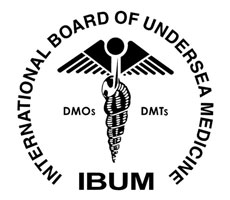How Successful Non-Surgical Weight Loss Can Be

Getting in shape might be difficult, but it is not impossible thanks to a plethora of non-surgical weight-loss aids. Commercial diets are often the first step in the weight loss journey for many people. Non-surgical weight loss methods may help when dieting and other personal efforts fail.
Non-surgical weight loss therapies are typically effective, non-invasive, and reversible. These treatments focus on decreasing the room in the stomach so you do not feel hungry. This motivates you to eat less, consume fewer calories, and lose weight. Patients can repeat the process as frequently as the doctor suggests. They will prioritize your complete health while making weight loss suggestions.
An overview of non-surgical weight loss
Medical weight reduction makes weight loss without surgery possible by altering an individual's eating pattern and encouraging them to follow a healthier lifestyle. Medical weight reduction can do more than just help people look and feel better in clothes; it can also decrease blood sugar, blood pressure, and cholesterol and ease the strain on joints that comes with being overweight.
Several variables will influence the outcomes, including the amount of desired weight loss, current medical conditions, preferred non-surgical weight loss option, and level of commitment to treatment. As a result, medical weight reduction considers the patient's unique requirements, health and medical problems, and weight loss objectives. To achieve long-term weight reduction, the healthcare provider will work with the patient to make significant dietary, physical, and psychological adjustments. Some of the options available include:
- Non-surgical intragastric balloon
- Nutrition and lifestyle guidance
- Diet regimens tailored to the individual's needs (including low-calorie meal replacement options)
- Medication for weight loss
Inserting a saline-filled silicone balloon in the stomach is one of the safest and most successful non-surgical weight reduction procedures. This simple process aids in weight loss by lowering the amount of space available in the stomach for eating. Most individuals choose this procedure after failing to achieve substantial improvements through diet and exercise.
These non-surgical weight reduction techniques enable patients to lose weight and improve their health. They can help patients lose more weight than other weight loss options besides surgery. After getting one of these treatments, one might expect to drop 20 to 35 pounds.
Candidacy for non-surgical weight loss
The weight loss program providers will assess if the patient is eligible for the treatment. If their BMI is between 30 and 40, they can expect a safe and successful non-surgical weight-loss procedure. A BMI of 40 or above almost always necessitates weight reduction surgery, such as gastric sleeve, gastric bypass, and gastric banding.
What does the non-surgical procedure entail?
Since not everyone requires or qualifies for surgery, non-surgical weight reduction methods such as the balloon are feasible. When the doctor decides that a balloon is the best choice for the patient, they will prepare the patient for the procedure.
After administering a sedative on the patient, a silicone balloon is passed down the neck and into the stomach using a small catheter. The silicone balloon is inserted in the optimal area in the stomach using an endoscope. The doctor will then fill the balloon with colored saline, which is just salt water mixed with food coloring. The procedure is performed on an outpatient basis.
The balloon can break, so it is covered with a second balloon to ensure that treatment continues. The color of the patient's urine will indicate whether the balloon is leaking. The inflated balloon functions as a hunger suppressant, making the patient feel full. This urges them to eat less and, therefore, consume fewer calories. Patients must take care of their health for successful treatment, which includes adhering to the stringent food and activity regimen prescribed by the non-surgical weight reduction specialist.
Following the procedure, patients can begin to sip clear beverages. The soft food stage starts in the second week, and after three weeks, they can eat solid food. Periodic check-ups with the doctor are essential to keep track of the progress.
In conclusion
The balloon is one of the most effective non-surgical weight reduction methods, but it is not a long-term solution. After six months, your weight loss doctor must take out the balloon. This is, however, ample time for you to shed weight and return to a healthy BMI.
The first step to losing weight through non-surgical options is meeting the medical team for a consultation. They will discuss your objectives and determine the next steps to achieve your desired body weight.
Request an appointment here: https://omgwellnessmd.com or call Optimal Medical Group at (559) 425-1118 for an appointment in our Fresno office.
Check out what others are saying about our services on Yelp: Read our Yelp reviews.
Related Posts
For most patients, getting the O-Shot, a non-surgical procedure that uses your own platelet-rich plasma to enhance sexual function and treat urinary incontinence. It involves only minimal pain, thanks to numbing creams and careful technique. Most women describe the sensation during the O-Shot as a mild pinch or brief discomfort rather than true pain, with…
The PRP P-Shot, also known as the Priapus Shot, is a cutting-edge medical therapy using platelet-rich plasma (PRP) from your own blood. It improve erectile function, sexual health, and sexual performance in men. This in-office procedure harnesses the body's natural growth factors to promote tissue growth, enhance blood flow. Target issues like erectile dysfunction with…
What Does the O-Shot Do? The O-Shot, also known as the orgasm shot, is a non-surgical procedure that uses platelet-rich plasma (PRP) from a woman's own blood to enhance sexual function, sensitivity, and potentially treat urinary incontinence. Many women turn to the O-Shot to improve blood flow, boost sexual pleasure, and revitalize vaginal tissue, often…
How long does the P-Shot last? Most men experience noticeable results from P-Shot treatment for 6 to 12 months. Some men even report benefits up to 18 months or longer. This revolutionary intervention, also called the Priapus Shot, uses platelet rich plasma from your own blood to improve erectile function. Also, it enhance sexual performance,…
















